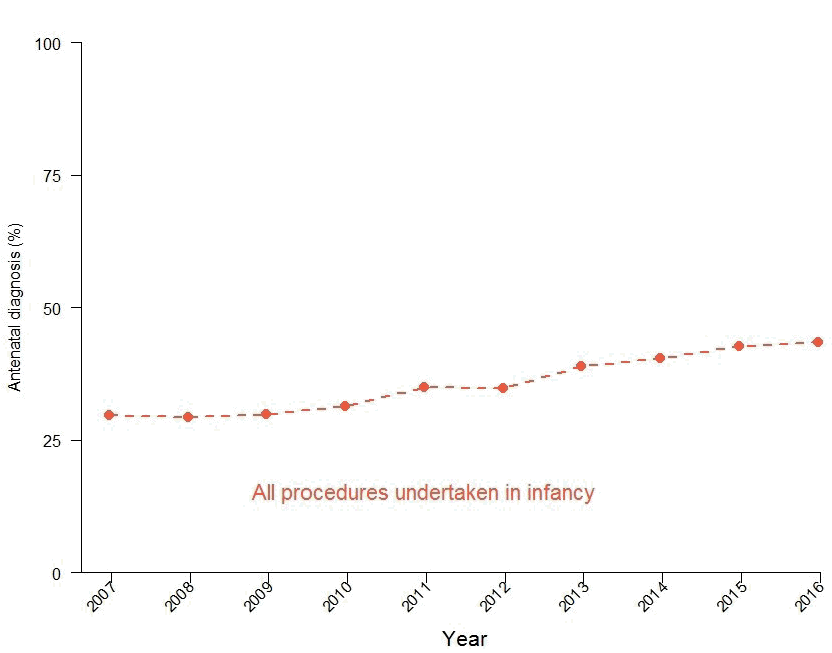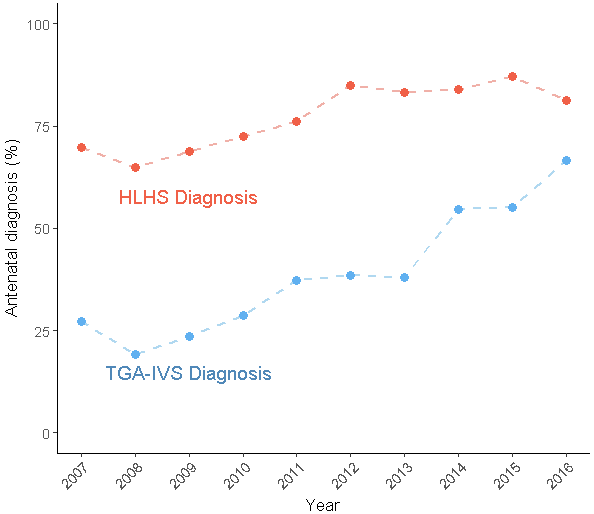Results are averaged over a 3 year period and also shown for the most recent full year available.
Current analysis shows that the proportion of children with CHD who are diagnosed antenatally, who have a procedure in the first year of life, detection continues to improve as show in figure 4.
Figure 4

Proportion of patients undergoing procedures in infancy successfully diagnosed antenatally (financial years 2007/8-2016/17) &5
In addition to overall antenatal diagnosis, there has also been there has also been a significant increase in the rate of diagnostic success for both HLHS and TGA-IVS as shown in figure 5.
Figure 5:

Proportion of patients with two specific congenital heart malformations requiring a procedure within 6 months of birth with a successful antenatal diagnosis (financial years 2007/8- 2016/17). Note: HLHS = hypoplastic left heart syndrome; TGA-IVS = transposition of the great arteries with an intact ventricular septum
In both conditions, infants often need an emergency procedure within hours of delivery followed by major surgery within a few days of birth. Research has shown that an antenatal diagnosis improves survival with fewer complications and better